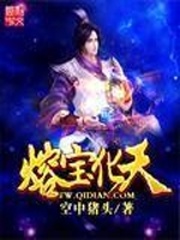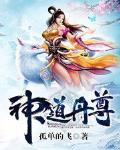一句一译的安徒生童话 第1章 皇帝的新装 The Emperor’s New Suit (第1/5页)
光玩不行提示您:看后求收藏(350中文350zw.com),接着再看更方便。
《皇帝的新装》,1837 年
The Emperor’s New Suit, 1837
---
安徒生所写的这个讲述说实话的孩子的故事赢得了许多赞赏者,因为它有力地歌颂了青春和纯真。
Andersen’s tale of the truth - speaking child has won many admirers because it pays powerful tribute to youth and innocence.
“当我还是个孩子的时候,” 历史学家露丝・罗森写道,“我最喜欢的故事是《皇帝的新装》。一群成年人赞扬皇帝的新衣橱,但是一个孩子脱口说出了真相:
“When I was a child,” historian Ruth Rosen writes, “my favorite story was ‘The Emperor’s New Clothes.’ A chorus of adults praises the Emperor’s new wardrobe, but a child blurts out the truth:
皇帝实际上是完全赤裸的。
The Emperor is in fact stark naked.
从这个故事中,我了解到成年人可能会被胁迫而认可各种胡言乱语。”
From this tale, I learned that adults could be intimidated into endorsing all kinds of flummery.”
安徒生的这个故事包含着许多可能的教训,而且每个读者似乎都从中得到不同的信息。
Andersen’s tale is encoded with many possible lessons, and every reader seems to take a different message from it.
对于认知科学家史蒂文・平克来说,这个故事提供了一个 “关于集体幽默的颠覆力量的美妙寓言”,揭示了人多力量大以及笑声发出的 “不自觉、破坏性和有感染力的信号” 的力量。
For the cognitive scientist Steven Pinker, the story offers a “nice parable of the subversive power of collective humor,” revealing the strength that comes in numbers as well as the power of the “involuntary, disruptive, and contagious signal” sent by laughter.
安徒生故事中的孩子,无礼、无畏且充满活力,即使成年人 —— 恭敬、害怕且缺乏安全感 —— 太容易屈服于欺骗,他也向权势说出真相。
The child in Andersen’s story, who is irreverent, fearless, and spirited, speaks truth to power even as adults—deferential, intimidated, and insecure—succumb all too easily to deception.
孩子的声音使人们的注意力从故事中被描述为 “美丽的”、“可爱的”、“迷人的”、“无价的”、“精致的”、“非凡的”、“惊人的”、“极好的”、“壮丽的”、“卓越的” 和 “精美的” 东西上转移开了。
The voice of the child has diverted significant attention from something in the tale that is described as “beautiful,” “lovely,” “enchanting,” “priceless,” “exquisite,” “extraordinary,” “amazing,” “magnifique,” “splendid,” “superb,” and “delicate.”
虽然 “可爱的” 是安徒生最喜欢的词之一,并且被他反复使用,但在一个不到两千字的故事中发现这个词及其变体被如此频繁地使用,还是有点令人惊讶。
Although “lovely” was one of Andersen’s favorite words and was used by him repeatedly, it still comes as something of a surprise to find that term and its variants used so often in a story with less than two thousand words.
更令人惊讶的是,这些形容词都描述了看不见的东西,一种不存在的布料和衣服。
And it is even more astonishing that those adjectives all describe something invisible, a cloth and clothing that do not exist.
正如故事的最后几句话告诉我们的那样,皇帝的拖裾,就像他的衣服一样,“根本不存在”。
The Emperor’s train, like his clothing, are “not there at all,” as the last words of the tale tell us.
这个集子中的第一个故事充分说明了安徒生的艺术。
The first story in this collection speaks volumes about Andersen’s art.
安徒生仅仅用文字就诱使美好的事物产生,他创造出会唱歌的夜莺、自己跳舞的鞋子、充满生命力的大理石雕像、挂满金色果实而闪闪发光的水下花园 —— 甚至还有一块 “根本不存在” 的布。
Using nothing but words to lure objects of beauty into being, Andersen creates nightingales that sing, shoes that dance on their own, marble statues that pulse with life, underwater gardens that glitter with golden fruit—and even a cloth that is “not there at all.”
在想象中,夜莺、鞋子、大理石雕像、花园和布都拥有一种辐射能量,使它们明显是真实的。
In the mind’s eye, the nightingale, the shoes, the marble statue, the gardens, and the cloth possess a radiant energy that makes them palpably real.
虽然看不见且 “根本不存在”,但它们仍然迷人、精致且可爱。
Invisible and “not there at all,” they still remain enchanting, exquisite, and lovely.
这些文字有某种激发力量,能让我们想象安徒生艺术构建的世界。
The words have a certain ignition power that allows us to imagine the world constructed by Andersen’s art.
《皇帝的新装》已经被翻译成一百多种语言,并且仍然引人入胜并激发模仿,正如最近出版的《皇帝的新装:全明星插图重述经典童话》所表明的那样。
“The Emperor’s New Clothes” has been translated into over a hundred languages and continues to fascinate and inspire imitation, as the recent publication The Emperor’s New Clothes: An All - Star Illustrated Retelling of the Classic Fairy Tale suggests.
在那本书中,露丝・韦斯特海默博士从宫廷御医的角度重新讲述这个故事;
In that volume, Dr. Ruth Westheimer refashions the story by narrating it from the point of view of an imperial physician;
卡尔文・克莱恩宣称 “没有什么能介于我和我的皇帝之间!”;
Calvin Klein reports that “nothing comes between me and my Emperor!”;
史蒂文・斯皮尔伯格扮演那个揭露皇帝赤身裸体的 “诚实男孩”。
and Steven Spielberg makes an appearance as the “honest boy” who blows the whistle on the Emperor’s birthday suit.
这个故事已经被改编成许多不同的媒介形式,1919 年尤里・热利亚布日斯基执导了一部同名的俄国电影,西尼德・奥康娜演唱了一首相关歌曲,1987 年有一部音乐剧由席德・西泽饰演皇帝,还有众多戏剧、短篇小说和动画电影对这个故事进行演绎或恶搞。
The tale has migrated into many different media, with a Russian film of that title directed by Yuri Zhelyabuzhsky in 1919, a song by Sinéad O’Connor, a musical of 1987 with Sid Caesar as Emperor, and numerous plays, short stories, and animated films that offer enactments or send - ups of the tale.
---
许多许多年前有一位皇帝,他非常喜欢新衣服,以至于花光所有钱去得到它们;
Many, many years ago lived an emperor, who thought so much of new clothes that he spent all his money in order to obtain them;
他唯一的志向就是总是穿着考究。



